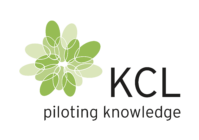Barrier Coating Fundamentals and Applications
Barrier coatings are protective layers applied to paper that prevent moisture, oxygen, and grease penetration, transforming ordinary paper into high-performance packaging materials that rival plastic alternatives while supporting sustainability goals. These coatings enable paper-based solutions to meet demanding packaging requirements across various industries.
KCL provides comprehensive barrier coating analysis and development services to help optimize your paper packaging performance.
Coating Technologies and Performance Characteristics
Water-based dispersion coatings use polymer particles suspended in water that form continuous films upon drying. Common types include styrene-butadiene latex for moisture resistance, acrylic dispersions for chemical resistance, PVOH coatings for oxygen barriers, and bio-based dispersions from renewable resources. Applied at 5-20 grams per square metre, these coatings offer good to very good moisture barriers and excellent grease resistance.
Polymer extrusion coating applies molten thermoplastics directly onto paper, creating robust continuous layers using materials like LDPE, PP, EVOH, and emerging bio-based polymers such as PLA. This method provides superior barrier performance with excellent moisture protection, heat sealability, and strong mechanical adhesion.
Dispersion coatings suit applications requiring moderate barriers, recyclability, and flexibility with lower capital investment. Extrusion coatings excel for extended shelf life, extreme barrier properties, and heat seal functionality but require higher investment and have polymer-dependent recyclability.
KCL’s pilot coating facilities enable testing and optimization of both dispersion and extrusion coating technologies before commercial production.
Performance Testing and Validation
Critical performance evaluation includes water vapour transmission rate (WVTR), oxygen transmission rate (OTR), and grease resistance testing. Pilot-scale trials enable optimization before commercial production, ensuring coatings meet specified requirements for moisture-sensitive and oxidation-prone products. Selection between coating methods depends on performance requirements, sustainability goals, and economic considerations, with each technology offering distinct advantages for specific applications.
KCL offers comprehensive barrier testing services including WVTR, OTR, and grease resistance measurements to validate coating performance against industry standards.
